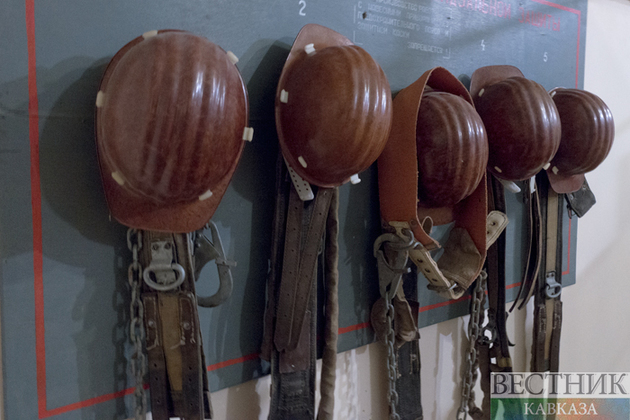The world’s second-largest rare earth reserve has been discovered in Turkey, but experts warn that turning rare earth deposits into financial success is easier said than done. Market Watch writes, citing Turkey’s Ministry of Energy and Natural Resources, that the site in the central Anatolia region contains 694 million tons of rare earth reserves.
The world’s largest rare earth field is an 800-million-ton site in China, officials added. Rare earth elements are used in a host of industries, from consumer technology to the automotive sector and aviation.
Of the 17 rare earth elements, 10 will be produced at the site, according to Fatih Dönmez, Turkey’s minister of energy and natural resources. “We will process 570,000 tons of ore annually,” he said, in a translated statement. Some 10,000 tons of rare earth oxide will be obtained from the processed ore, Dönmez added. Construction of a pilot plant, which will process 1,200 tons of rare earth annually, will be completed later this year.
Experts, however, say that despite their name, rare earths are not so uncommon. “There are plenty of rare earths on the planet, there’s no shortage,” said Lewis Black, CEO of tungsten mining company Almonty Industries Inc.
“Rare Earths aren’t rare,” Christopher Ecclestone, mining strategist at Hallgarten & Company, noting that large deposits are not unknown. “It’s all about the grade, the mineralogy and ultimately the percentages of heavies or lights [according to their atomic weights] and/or magnet metals,” he added.
“The old adage that ‘grade is king’ in mining still holds,” agreed Jon Hykawy, president of Stormcrow Capital. “If this Turkish discovery is gigantic but of very low grade, well, we usually call material like that ‘dirt’ — it means the same thing to miners as it does to everyone else.”
If rare earths can be obtained inexpensively, they can be very useful, according to Hykawy. “Magnets made with a combination of neodymium or praseodymium (both rare earths), iron and boron (neither of which is a rare earth) are, compared to pure iron magnets, incredibly strong,” he explained, adding that the magnets can be useful in drones and other products. “The smaller and stronger the magnet, the smaller and stronger the electric motor — so this impacts everything from consumer electronics and appliances to automobiles.”
But experts warn that processing rare earth elements is no easy task. “With a material like gold, if you discover a good deposit then your path is well understood,” Hykawy told MarketWatch. “You mine the ore, extract the gold and then you sell it because customers will beat a path to your door — with rare earths, your path is a little harder.”
After mining the ore, the rare earth-bearing minerals must be concentrated. “Then you dissolve the rare earths out of the minerals and into solution,” Hykawy added. “Then you extract the rare earths as oxides, but because of a quirk of nature all the rare earths tend to behave similarly as chemicals, so you end up with a mess of all of the rare earths jumbled together.” The rare earths must then be separated from each other. “But to turn those into things like magnets, I need to take some of the oxides and turn them back into metals,” Hykawy explained. “This isn’t just pouring metal into a mold and then you’re done.”
Black of Almonty Industries agrees that processing rare earths brings a unique set of challenges. “There’s a lot of heavy chemicals in the refining, after the extraction,” he said. “You have got to handle that very carefully.” However, this can be achieved. Black cited the Mountain Pass mine in California, which is owned by MP Materials Corp., and Lynas Rare Earths Ltd.’s Lynas Mount Weld deposit in Australia as “fantastic projects.”
The importance of the discovery in Turkey will depend on whether it ever becomes economic, according to Luisa Moreno, managing partner of Tahuti Global. “Size is not everything,” she told MarketWatch, pointing to the challenges faced by Greenland Minerals Ltd.’s GGG, rare earths project at Kvanefjed in Greenland. Last year Greenland’s parliament banned uranium mining, according to Mining.com, a move that blocked development of the vast rare earths project. Despite the difficulties involved in obtaining rare earths, Moreno highlights the elements’ huge range of applications. “The EV [electric vehicle] market will need large amounts for rare earths magnets,” she explained. “Rare earths are critical for the defense industry, and are extensively used in medical applications (like MRI machines), as fertilizers, as phosphors materials for lighting applications and screens, in emissions control (e.g., catalytical converters), are essential for oil refinery, etc.”
In his statement, Dönmez predicts that 72,000 tons of barite, 70,000 tons of fluorite and 250 tons of thorium will be obtained from the site in central Anatolia. Barite is used in oil and gas exploration and the healthcare industry, while fluorite is used in steel manufacturing. Thorium is being touted as fuel for the nuclear power industry.






